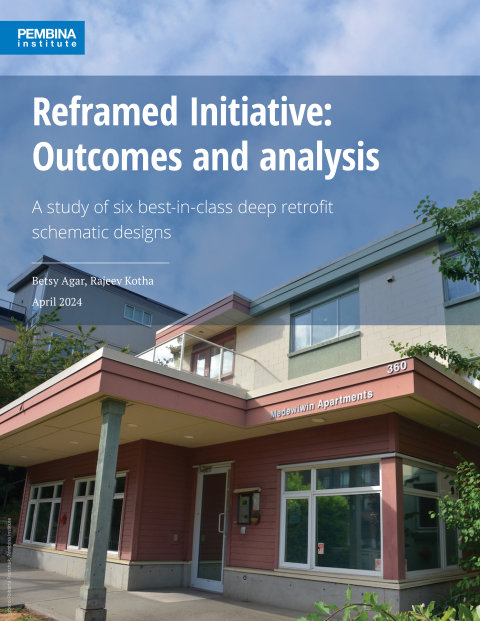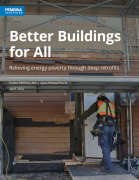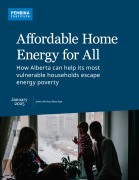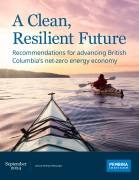Deep retrofits are holistic energy efficiency home upgrades that also improve occupant thermal comfort and resilience to extreme weather events, while making housing more affordable by stabilizing utility costs for customers. This is achieved through the selection of low-carbon construction materials, installation of highly efficient technologies (like heat pumps) and integration with a supply of clean energy. The Lab results were compared to business-as-usual “baseline” approaches that only maintain status quo operations.
The Reframed Lab challenged six design teams to collaborate on developing deep retrofit plans that would deliver energy efficiency and carbon emissions reductions, as well as beyond-energy benefits such as climate adaptation, seismic resilience, improved occupant health and wellbeing, and the reduction of embodied carbon (carbon emitted in production of building components). The design teams estimate deep retrofits can cut energy use by up to 90%, which underscores the comprehensive opportunity deep retrofits present for driving down energy demand and cutting utility costs during an affordability crisis. This compares very favourably to business-as-usual “baseline” retrofits, which would only deliver 3% to 41% in energy reductions.
The teams also proposed operational carbon emissions reductions ranging between 68% and 99%, a remarkable shift from the standard 3% to 55%, further highlighting the transformative potential of deep retrofits. The six buildings chosen for the Lab were in Vancouver, Victoria, North Vancouver, New Westminster, Coquitlam, and Kamloops, providing housing for seniors, people with disabilities, and low-income households.
The results delivered through the Reframed Lab have implications for all of Canada’s building sector. The findings not only highlight innovative approaches to decarbonization and adaptation but also set the stage for nationwide adoption of sustainable building practices. Overall, Canada’s buildings sector is the third-largest contributor to the country’s emissions at 87 Mt CO2e (13% of the total). We know that 80% of the buildings that will exist in 2050 are already built. Natural Resources Canada (NRCan) typically expects deep retrofits to achieve reductions in energy consumption by 50% to 70% and greenhouse gas emissions by 80% to 100%.
The full range of deep retrofits benefits were:
- Enhanced climate adaptation and climate resilience based on local climate risks such as floods, wildfires, and extreme heat.
- Seismic upgrades to meet three performance objectives, and roof structural upgrades.
- Prioritizing occupant health and wellbeing.
- Minimizing on-site construction and disturbance to occupants.
- Enabling the addition of new floor(s) and/or unit(s).
- Minimizing added lifecycle embodied carbon associated with the retrofit.
- Optimizing on-site solar PV electricity generation and storage.
- Exploring the feasibility of other onsite renewable energy generation technologies.
The Reframed Lab was developed and hosted by the Pembina Institute in partnership with the City of Vancouver, the BC Non-Profit Housing Association, Metro Vancouver Housing Corporation (MVHC) and the Province of British Columbia (through BC Housing). Capital for the retrofits was provided by MVHC and BC Housing with assistance through the FortisBC Deep Energy Retrofit Pilot Program, CleanBC and the Canada Infrastructure Program.
Find out more about our buildings work
Report recommendations
- Send a strong market signal: Introduce standards and regulations that raise the floor of minimum building performance to open markets for industry leaders, paving the way to market transformation and better outcomes for owners and occupants.
- Lead through public procurement: All levels of government can help advance and stimulate market uptake of deep retrofits by adopting innovative procurement practices that link innovative design, construction, and operations for government-owned buildings.
- Close the deep retrofit cost gap: Help build supply and demand for deep retrofits until the market reaches the economies of scale that lead to cost compression and a self-supporting business case for deep retrofits–e.g. through subsidies, grants, and tax incentives.
- Educate owners on the benefits of deep retrofits: Build demand for deep retrofits by helping owners understand the risk of short-sighted investments and the value of implementing holistic, long-term asset management plans that recognize key opportunities in component lifecycles.
- Invest in workforce development and supply chain growth: Provide opportunities like the Reframed Lab. Bringing together professionals across the retrofit supply chain fostered learning and revealed gaps in supply chain knowledge and capacity to deliver deep retrofits as regulations and incentives ramp up and drive demand.






